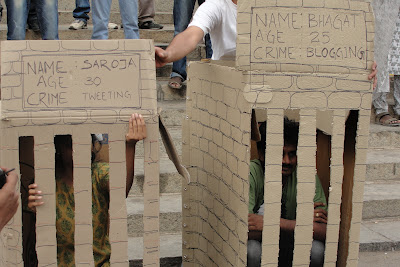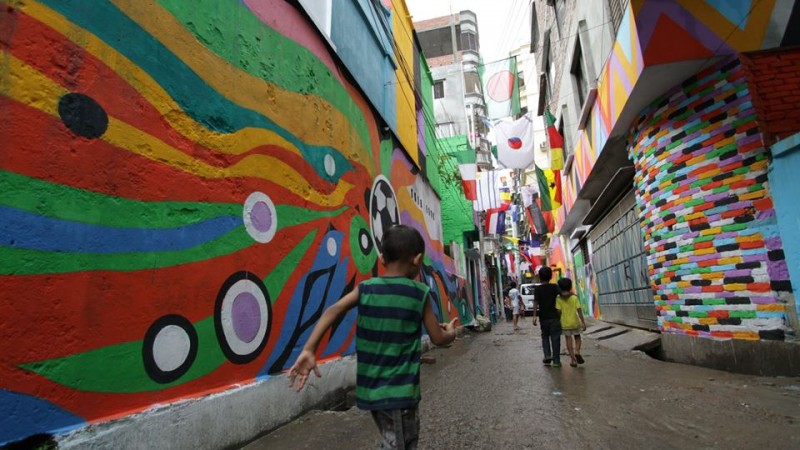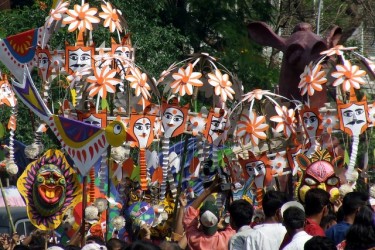This post was first published in Global Voices Online
In April 2011, the Ministry of Communications and Information Technology of India quietly issued
‘Information Technology (Intermediaries Guidelines) Rules 2011’
restricting web content that are designated as “disparaging,”
“harassing,” “blasphemous” or “hateful.” Rishabh Dara at The Center for Internet And Society cites the rule's chilling effects on free expression on the Internet.
Moreover, the Indian government has asked the United States to ensure that India-specific objectionable content are removed from the social networking such as Facebook, Google and YouTube. According to news reports they also want these international service providers to set up servers in India to help regulate the content locally.
We have already seen several incidents of online contents being taken down for containing ‘offensive’ content. Vinaya Naidu shares how the Mumbai Police Crime Branch put a ban on cartoonist Aseem Trivedi's website www.cartoonsagainstcorruption.com, following a complaint that his cartoons were disrespectful to the nation:
The discussion forum on ‘Internet Censorship’ at Indiblogger.in captures more opinions on such threats.
Amrit Hallan writes:
Internet Democracy project quotes Anja Kovacs talking about the background on such rule:
The Indian Netizens are not sitting idle.
This petition titled “MPs of India: Support the Annulment Motion to Protect Internet Freedom #stopitrules” is circling in the web and more and more citizens are signing. On April 22, several organizations and forums issued this press release which revealed:
Here is a list of more campaigns:
Protests are going in several parts of the country against the IT rule. Ashfaq reports about a protest on 21 April:
Harshitha shares the experience:
Another protest by Save Your Voice titled “Freedom In A Cage” was held in April 22, in Delhi's Jantar Mantar. Check the report and the pictures at the Kafila blog.
Moreover, the Indian government has asked the United States to ensure that India-specific objectionable content are removed from the social networking such as Facebook, Google and YouTube. According to news reports they also want these international service providers to set up servers in India to help regulate the content locally.
We have already seen several incidents of online contents being taken down for containing ‘offensive’ content. Vinaya Naidu shares how the Mumbai Police Crime Branch put a ban on cartoonist Aseem Trivedi's website www.cartoonsagainstcorruption.com, following a complaint that his cartoons were disrespectful to the nation:
There was no legal notice, no court order, no advance warning and not even a letter/email requesting to remove the objectionable content. And this is the freedom of expression in the world’s largest democracy. Since then, Aseem has continued to fight against corruption through his blog ‘www.cartoonsagainstcorruption.blogspot.in’ which is quite under the scanner.
 |
| Add caption |
Amrit Hallan writes:
To be frank, the Internet scares the shit out of them, especially after WikiLeaks, the unshackled conversations over Twitter and Facebook and social networking-supported civic unrests. And it’s not just the government; all the agencies, may it be bureaucracy, the conventional mainstream media and the old school businesses that thrive on people’s inability to communicate with each other, would like to throttle the free flow of information on the Internet. Precisely this is the reason why there is no hue and cry on TV channels on the government’s new censorship drive.Amrit lists the threats according to the new Information Technology Guidelines notified by the government which will create an Orwellian world.
Internet Democracy project quotes Anja Kovacs talking about the background on such rule:
Since its founding, the independent Indian nation-state has wielded censorship as a tool to both contain the conflicts that emanate from India’s tremendous diversity and to ensure its homogeneous social, moral and political development. [..]
But if the advent of satellite television already revealed the vulnerabilities of this strategy, the Internet has of course made clear that in the long term, it is simply untenable. [..]
India’s use of censorship as a way to ensure national harmony has of course to some extent always had to elide, and silence, the enormous diversity within Indian society itself; censorship always benefits the status quo, and the Indian case has been no different.This video by Internet Democracy Project shows the impact of the new IT rules:
The Indian Netizens are not sitting idle.
This petition titled “MPs of India: Support the Annulment Motion to Protect Internet Freedom #stopitrules” is circling in the web and more and more citizens are signing. On April 22, several organizations and forums issued this press release which revealed:
In view of the possible deleterious effects of the Rules, the Honorable Member of Parliament, Shri P. Rajeeve has moved a statutory motion to get the aforesaid Rules annulled. This motion has been admitted and will be coming up before the Rajya Sabha during the second half of the Budget session of the parliament that starts on 24th of April, 2012.The press release calls all MPs to support the annulment motion. In the meantime a public interest litigation, calling the amended IT rules “unconstitutional”, has been filed in Kerala.
Here is a list of more campaigns:
- Internet Democracy project organized a day-long training program on freedom of expression and censorship for bloggers called ‘Make Blog Not War’.
- Aseem Trivedi and journalist Alok Dixit have started campaign on Facebook titled ‘Save your voice which highlights many protests.
- A tumblr site publishes pictures of individuals holding the placard “Don't Censor me”.
![dont censor me [640x480]](http://globalvoicesonline.org/wp-content/uploads/2012/04/dont-censor-me-640x480.jpg) |
| Don’t Censor Me - Pranesh. Image courtesy http://dontcensormeindia.tumblr.com/ |
FreeSoftware Movement Karnataka(FSMK) organized a protest to show our concern over these vaguely made laws. Blogger's, students, Teachers, IT professionals, Photographers came together in the center of the city shouting slogans and holding banners showing their apathy towards this new rule.
 |
| Protest at Karnataka. Image Courtesy Ashfaq at Just Another Coincidence. Click on the image to see more pictures. |
A mass of young, energetic and vibrant youth, software engineers and bloggers voiced their opinion. Being among them I felt the power of connectivity, an air of pride, of struggle for freedom. People sang in vigor, held placards and shouted slogans to save the internet.
I really hope the Indian government keeps the democracy alive by not passing the bill.Let's all strive for betterment of the society and let freedom of expression prevail.
 |
| Freedom in a cage campaign. Image Courtesy Save Your Voice. Click on image for more pictures |
































![1142704 [640x480]](http://globalvoicesonline.org/wp-content/uploads/2012/04/1142704-640x480.jpg)






